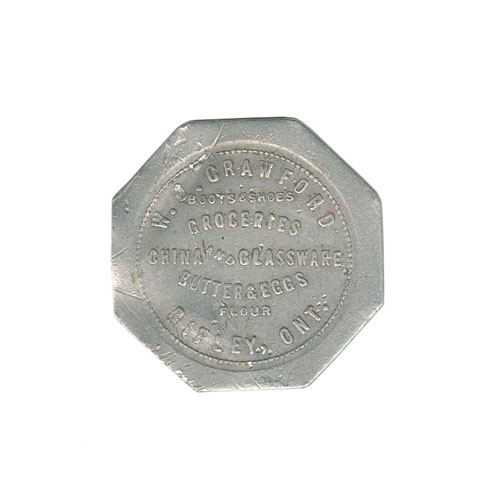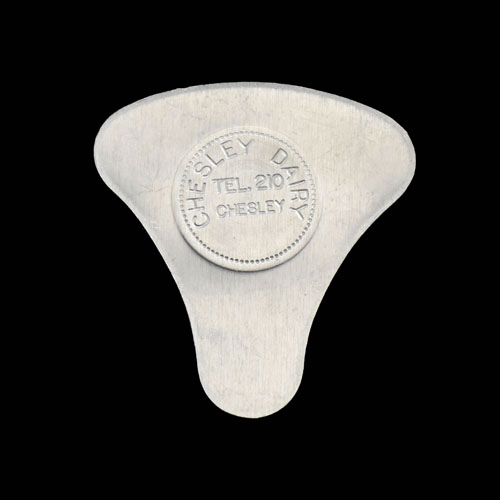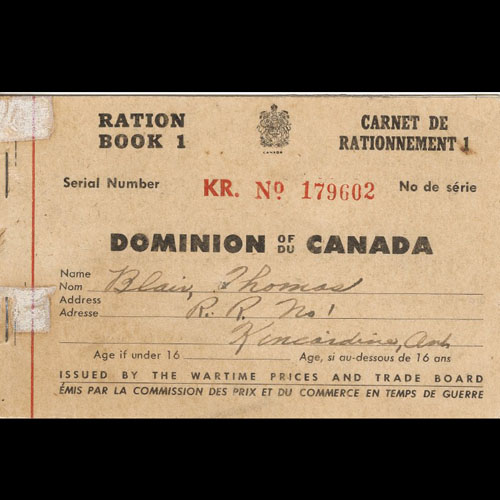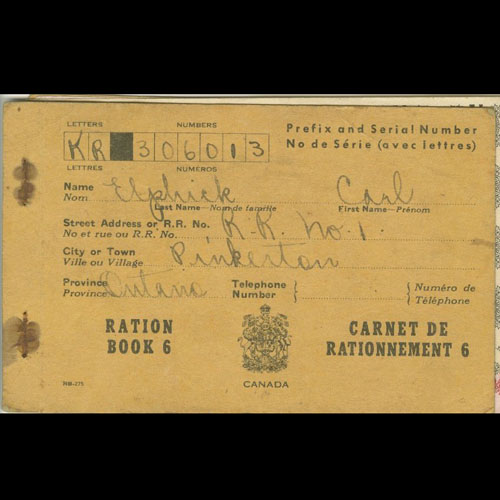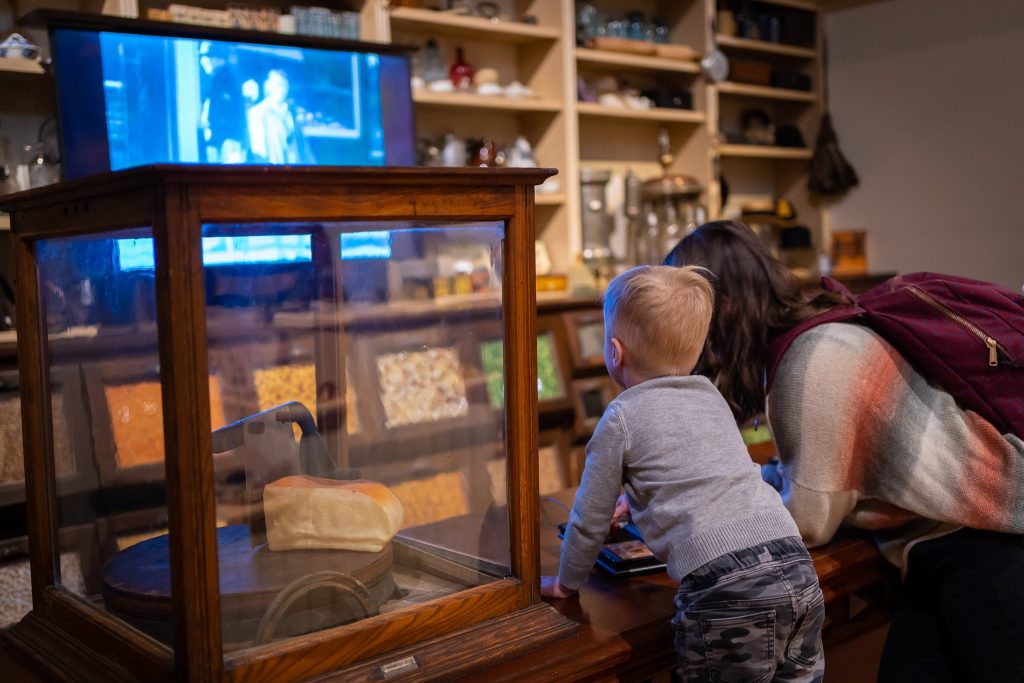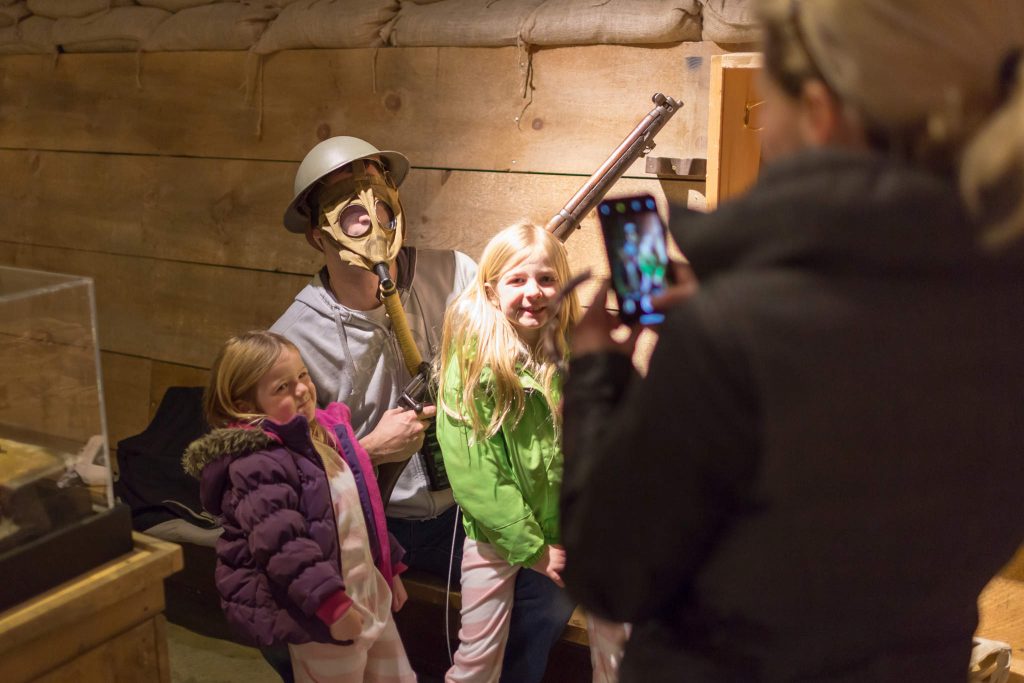In this age of online banking and the rise of digital currency, an interesting item to be found in the collection of the Museum are tokens. Originally tokens were issued by merchants or banks when currency was scarce and took the place of actual coinage. Tokens of this nature were made from cheaper materials than coinage such as copper, pewter, aluminum, or tin and came in a variety of shapes and sizes.
Tokens were often issued by merchants in payment of goods. This was beneficial to both the seller of goods and the merchant. They allowed the seller to bring their goods at their convenience, and to redeem the token when it suited them, while at the same time tying the seller to the merchant’s establishment. Used in this way, tokens promoted trade and allowed merchants to extend credit to customers. As a form of barter, tokens lasted well after a shortage of coinage was over. The merchants often issuing tokens were general stores, bakeries, and dairies.
Due to the colonial nature of early Canada tokens were often issued as there was a shortage of small change. When Upper and Lower Canada were united into the Province of Canada in 1841, the Bank of Montreal was given permission to coin copper and large issues of Canadian pennies were put into circulation, negating the need for early tokens. Any tokens created prior to Confederation in 1867, quickly went out of circulation around 1870 as large amounts of new Canadian coinage was available, and the use of tokens was curtailed by legislation.
From approximately 1890 to the period between the two World Wars, local merchants across Canada issued large quantities of different shaped tokens that were exchangeable for goods and services such as a loaf of bread, a glass of water, a pint of milk or a monetary value. The tokens found within the Museum’s collection date from this time period and are made from a light metal such as aluminum.
With the outbreak of the Second World War, Canada again saw the rise of tokens, this time in the form of ration tokens and coupons. Ration tokens were issued to households in order to help distribute items that were required for the war effort, such as gasoline and food stuffs, as fairly and equally as possible, and to dissuade people from hoarding. The first food stuff to be rationed was sugar in January of 1942, quickly followed by coffee and tea, and butter by the end of the year. Meat rationing began in 1943. Unlike the token of the past, ration tokens and coupons were regulated by law, with each coupon book having a serial number assigned to a person or household. The owner’s name and address were written on the front of each book. The end of the Second World War saw the end of ration tokens and coupons, and tokens for commerce in general. Today, tokens are still used, however they are more specialized, and are often for industries such as public transportation.

